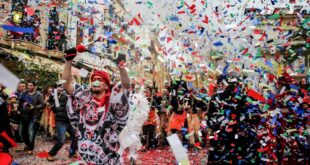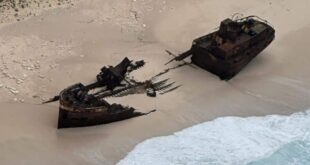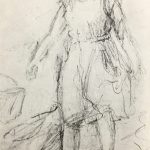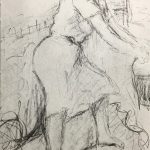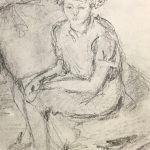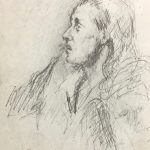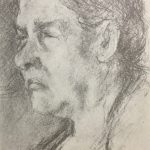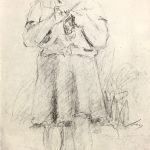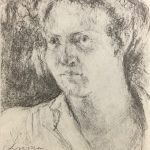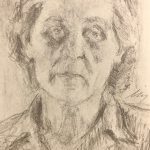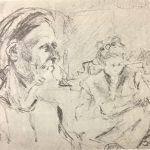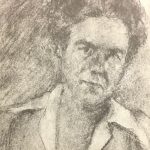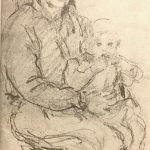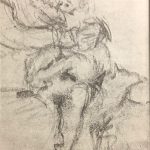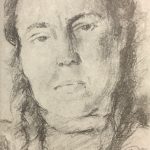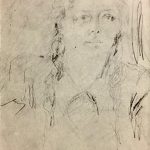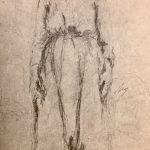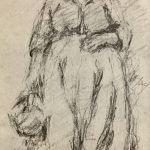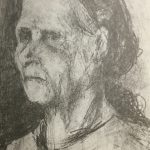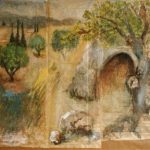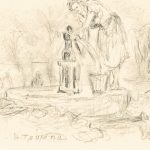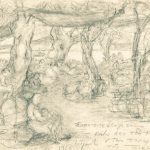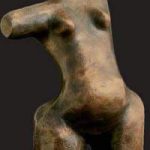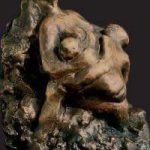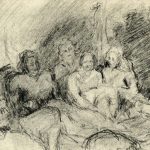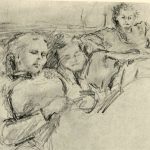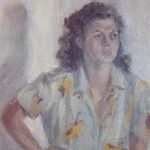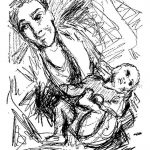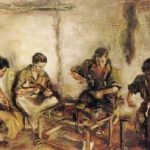
Katerina Hariati-Sismani was born in Zakynthos in 1911. Part of a large family, consisting of younger sisters and brothers, Katerina was an incredible woman whose story is relatively unknown. Her incredible strength and bravery highlighted the treatment of many women, through her art, who ended up in concentration camps, in Greece during the Greek Civil War.
During World War Two Katerina chose to fight as a political activist against German occupation, becoming a member of the Greek resistance. It was a fight that she continued when the war ended and Greece was plunged into Civil War. Sadly, it wasn’t just men who were exiled, like many other women at the time, Katerina was exiled to a camp in Trikeri off the coast of the eastern Greek mainland in 1947 for her policy activism. She was then later moved to the Makronisos concentration camp close to Athens. In total she spent five years incarcerated in these camps, which journals report as harsh places unfit for human habitation. The aim of the camps were to try and “re-educate and rehabilitate” those who were held in them. Three camps in total located in Chios, Trikeri and Makronisos were used to house these political prisoners.

The highly organised camps had originally been set up by the British but had been taken over by the U.S. in 1947 and funded largely through the Marshall Plan. Sadly the camps were mainly run by those who collaborated with the Germans during a World War Two, so they were similar to the many concentration camps that had sprung up across Europe. Many of the women who were exiled to the camps suffered from terrible hunger, with very little to eat. The food they were served was mainly bread and other food items were scare, although sometimes they were able to catch fish.
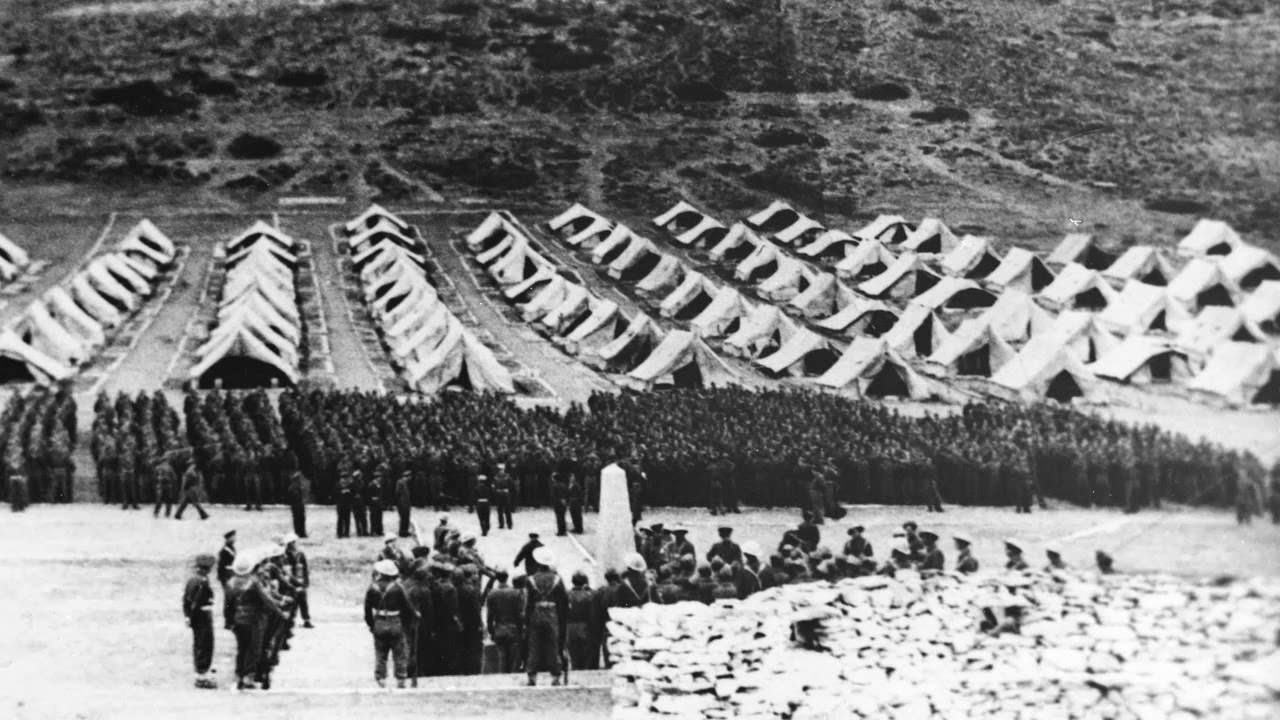
In a book of journal excerpts by prisoners, Katerina was noted as saying, “They tried to convince us to sign the the Declaration of Repentance. A guard told me that my turn would come in five minutes and gleefully asked me what I thought now? I told him that the only thing I was thinking was how to draw what what happening to the people in the camp.” This was after her arrival at Makronisos, during a re-education session at the Makronisos headquarters. A talented artist, Katerina had been a student of the Greek expressionist painter George Bouzianis, and during her time in exile she documented the daily life of herself and fellow prisoners on paper as well as painting “theatrical sets” for the camp’s small theatre. Many of the images Katerina created were done either by pencil or or by using leftover charcoal taken from camp fires. The drawings show a vivid and harsh life of both how the women lived, and their treatment. Starvation, illness and even assault were not uncommon and we can only begin to imagine the horrors these brave women faced on a daily basis. Women in were also subjected to forced labour and tortured by their captors too. The woman had no homes or buildings to live in, all of the camp’s prisoners slept in tents, regardless of the weather and the camp was surrounded by barbed wire. Whilst some of the camps had wells, the women also collected water from the sea in buckets too. Cutlery and other items were made from discarded rubbish and some prisoners even created spears to try and catch fish.
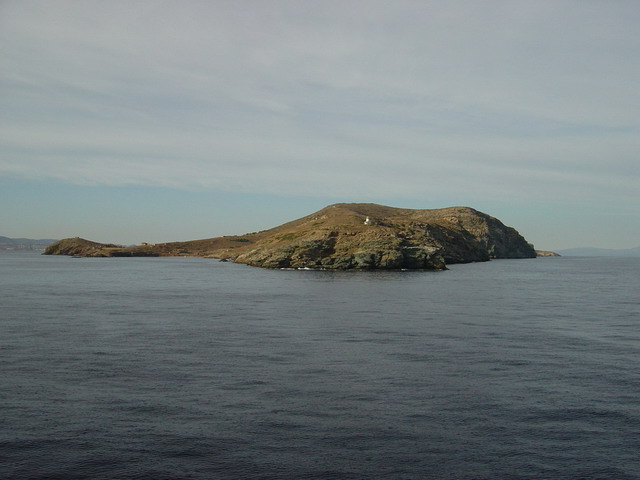
Katerina created many drawings of exiled women, thought to total around 250 whilst she too was in exile in these camps. The drawings have been reproduced in a special work called “Women from all around Greece”.
The images not only show daily life for the female prisoners but also their defiance, determination and strength. Many also show the bluntly harsh reality, and the horrors of what some women went through is etched upon their faces. Katerina also created other works after she was released.“Mother with two Children”, was a small clay sculpture that portrayed a dying mother who was trying to breast feed her two young dying children. It is thought this work was created from a sketch from the Terezin camp in Trikeri (a Nazi concentration camp/Ghetto from 1941-1944). Later in 1955 Katerina made a piece called “Torso of a woman”. In 2010 both sculptures were metal cast into a number of limited pieces.
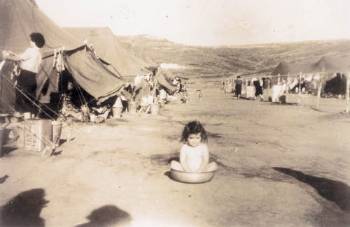
Katerina Hariati-Sismani’s work has been exhibited in the Athens National Museum, the Museum of Hellenic Arts, the Exile Museum and the Solomos Museum on Zakynthos. After leaving the camps Katerina went on to become a truly great painter and artist, settling in Athens, where she later lived with her son. Sadly Katerina passed away on 03 April 1996, and respectful of her wishes, she was buried in her historic family tomb on Zakynthos. Katerina Hariati-Sismani was not just a brave daughter of Zakynthos, who fought for what she believed in, but she also left behind some of the most thought provoking and honest art work from a truly awful time in Greece’s history. This daughter of Zakynthos and her bravery to depict life in the camps, should never be forgotten.
This photo gallery portrays of some of Katerina’s drawings, sculptures and theatre scenery. Copyright of these works belong to Katerina and her family.
 Zakynthos Informer Zakynthos Informer
Zakynthos Informer Zakynthos Informer


